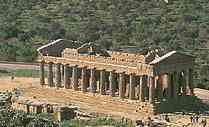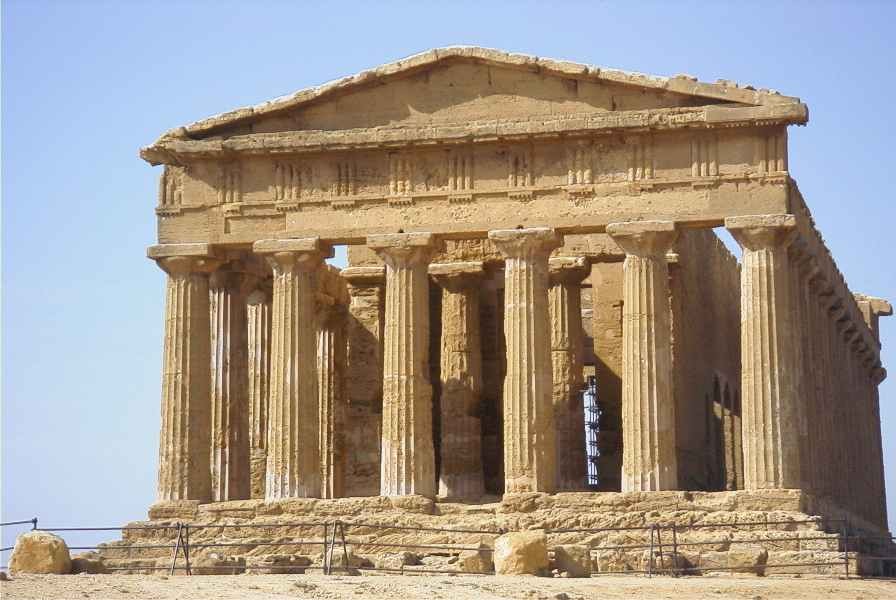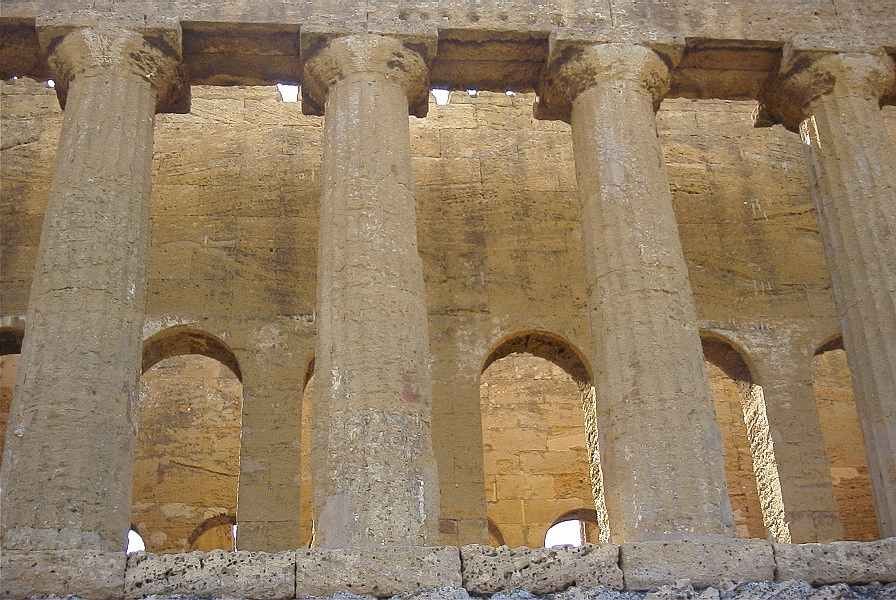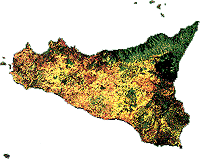
 The Temple of Concord -- A
baptized Pagan
The Temple of Concord -- A
baptized Pagan
Thursday morning we finally packed out of the Palermo hotel and headed across the island to Agrigento, a town of about 50,000 people (including 1934 Nobel Laureate Luigi Pirandello. He was dead by the time we got there so we couldn't talk to him. We were by that time about 40 characters in search of an author, or at least a glass of wine. Absence was also the case for another famous native son, Empedocles, who said everything was made of earth, water, air, and fire but did not invent rock and roll, as far as we know).
The place has been populated from prehistoric days (in fact, a half-million year old "human" skull has been found there so we could say pre-human days). Agrigento, then called Akragas, peaked in the 6th century BC when the place outlawed human sacrifice, beat Carthage in a number of battles, and started building temples which remain, to some extent today. It has changed names many times, becoming Agrigentium by the Romans. When Mussolini came to power, he tried to resurrect the glory of Rome past by returning Italian spots to their Roman names so the town became Agrigento.
The temples are in an area misnamed "The Valley of the Temples." In fact, its on a plateau and surrounded by a wall partly made by nature that was used as a burial area by both pagans and Christians. The town also contains a significant archeological museum we weren't allowed to visit but we didn't seem to leave many stones unturned. We confined ourselves to a few temples, a walk over a graveyard, and lunch.
Below is a picture of the temple of Juno, one of the few to have any significant amount of stones standing, in this case 25 of the original 34 pillars, some of them re-erected in the early 1900s.

The best preserved is the temple of Concord which survived, like the Pantheon in Rome, by becoming a Christian church so that it couldn't be torn down to recycle its stones into new churches (as was the case at the mammoth temple of Zeus nearby).

Here's a side view showing some of the later arches added, probably in the 6th century, when the interior was made into a church.

After lunch we traveled to Piazza Armerina where we saw a lifetime supply of floor mosaics. Please join us by clicking here.
Where do you want to go today? Here's a few choices:
